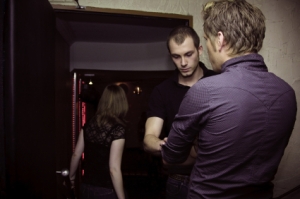 TAM®-certified hospitality professionals know to always be alert and check IDs year round. However, they should be extra vigilant about preventing teenage drinking going into the spring party season. With both prom and graduation around the corner, some teenagers will be trying to obtain alcoholic beverages through a variety of methods including using fake or borrowed IDs, asking other patrons to purchase liquor for them and even stealing alcoholic beverages when they think no one is looking.
TAM®-certified hospitality professionals know to always be alert and check IDs year round. However, they should be extra vigilant about preventing teenage drinking going into the spring party season. With both prom and graduation around the corner, some teenagers will be trying to obtain alcoholic beverages through a variety of methods including using fake or borrowed IDs, asking other patrons to purchase liquor for them and even stealing alcoholic beverages when they think no one is looking.
Peer pressure is a constant concern among young people. Teens want to fit in, and alcohol is not only easily accessible to many, it can also contribute to the party atmosphere at end of the school year celebrations. A report from the Substance Abuse and Mental Health Services Administration indicates that 51% of 18-20 year olds in Nevada have engaged in underage drinking within the past month, and 36% have engaged in binge drinking within the last month (SAMHSA). What can you do to help prevent underage drinking and keep things safe?
Reduce the availability of alcoholic beverages to underage drinkers by checking identification carefully or for anyone who appears to be under the age of 30. Always be vigilant about checking identification. Completing your alcohol awareness training with TAM® of Nevada will teach you tips and techniques for spotting fake or borrowed identification.
Off-premise sales professionals should also remain vigilant about alcohol sales. Make sure that ‘alcopops’ such as Four Loko which are popular with teens and sold off-premise are displayed in areas dedicated to alcoholic beverages, not in the soft drink section. Many of these drinks can be easily confused for non-alcoholic energy drinks on quick glance, and it just makes it easier on everyone involved to keep them separate.
A new study suggests that approximately 25% of teen drinkers obtain alcohol from a parent or other family member (MADD). Clerks and cashiers don’t necessarily know that if they sell beer and liquor to a legal adult, the adult won’t provide that liquor to teenagers, but using your best judgment and following store procedures will help to keep things safe and legal. Remember to report any suspicious behavior or activity among patrons to your supervisor or manager.
Be an example to others by promoting safe beverage policies. You can set an example among your coworkers and young people by making it clear that you think underage drinking is NOT ok. In addition to checking identification and keeping a close eye on all patrons, also consider displaying signage in your store or bar announcing that purchasers of alcohol will be carded.
What policies have you instituted at your organization to deter teen drinking?
Resources
- Nevada State Profile and Underage Drinking Facts – Substance Abuse and Mental Health Services Administration
- New Data Showing that a Quarter of Teen Drinkers Get Alcohol from a Parent or Family Member – MADD
© 2012 National Hospitality Institute®, TAM® of Nevada



